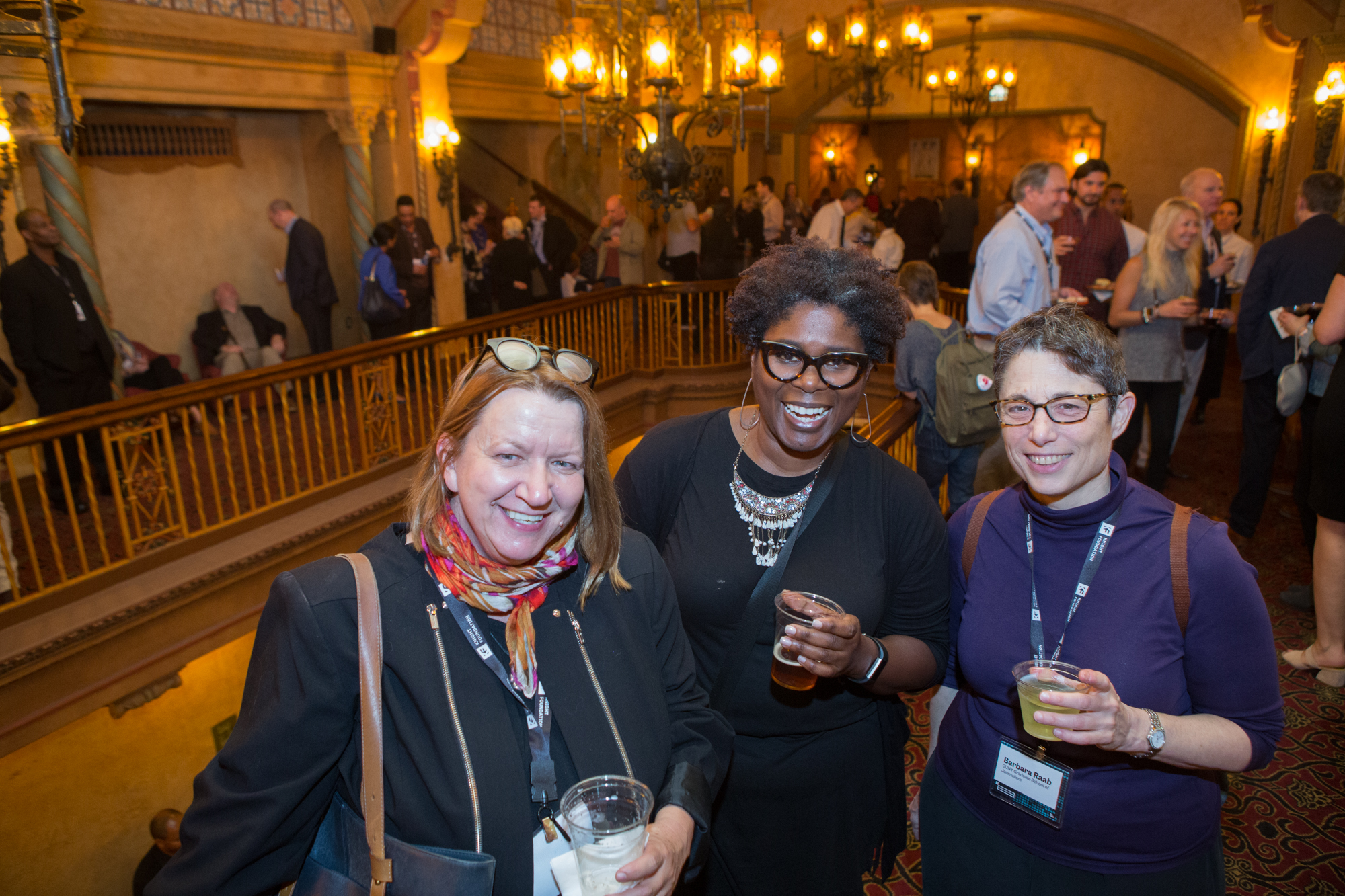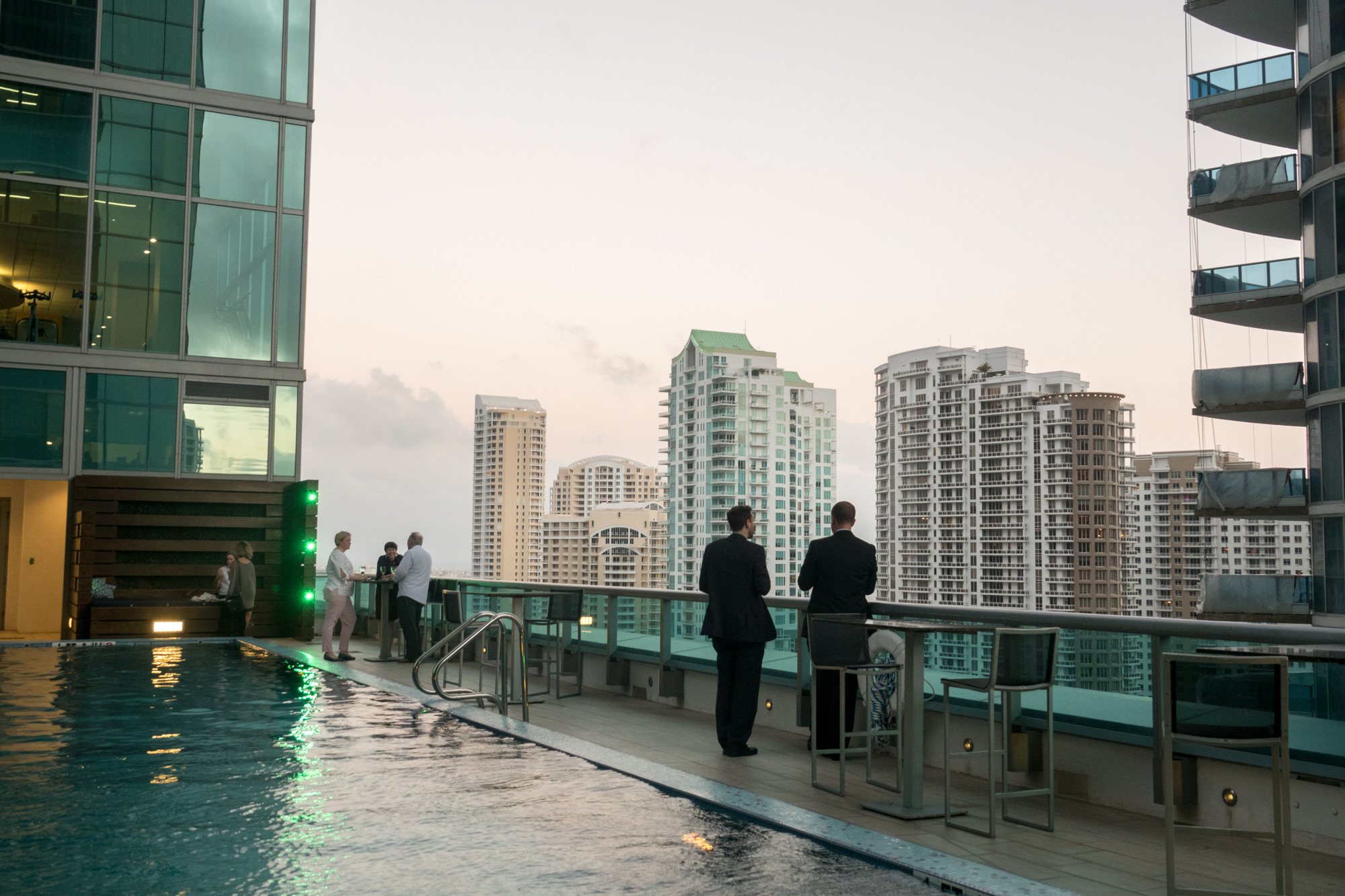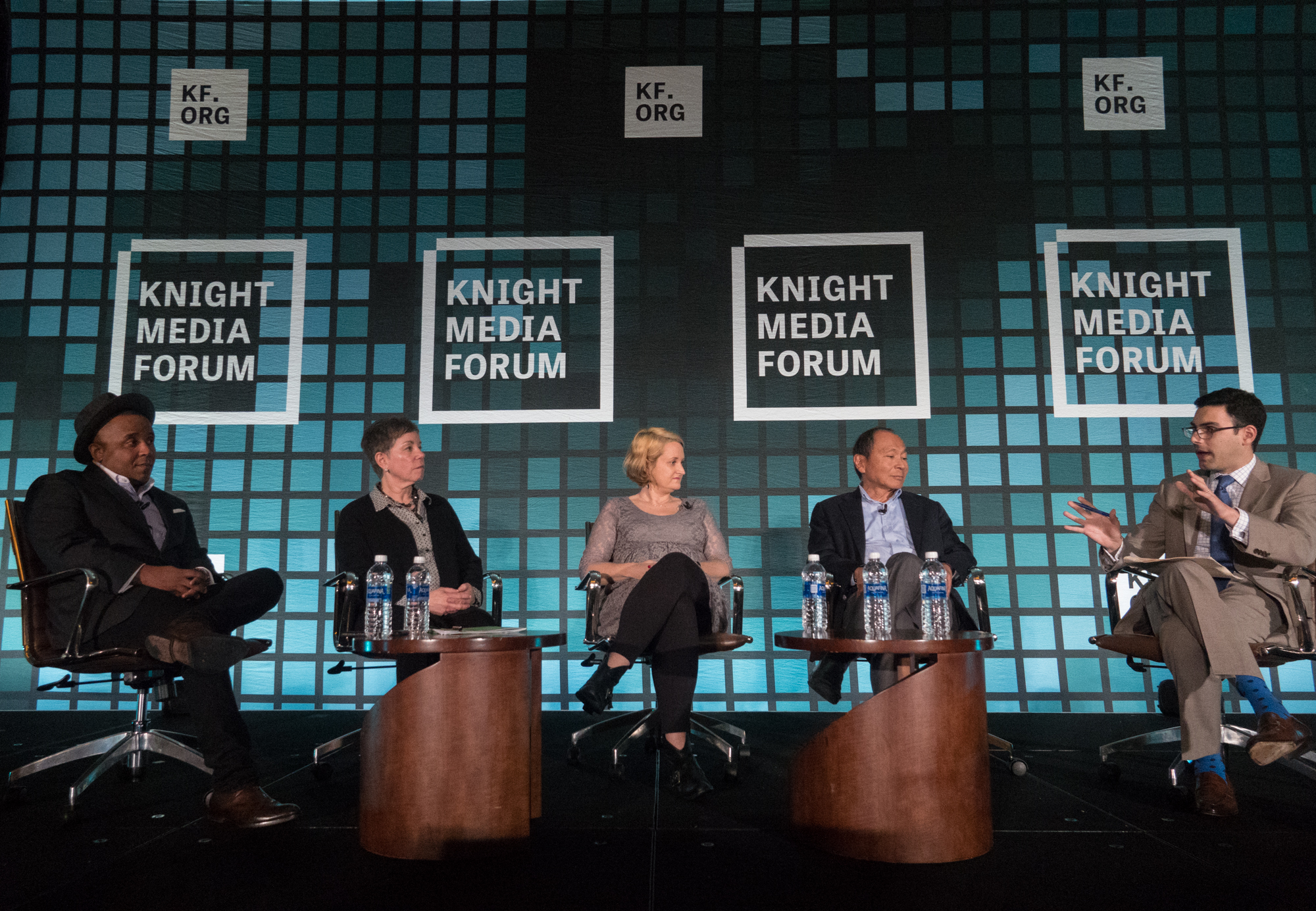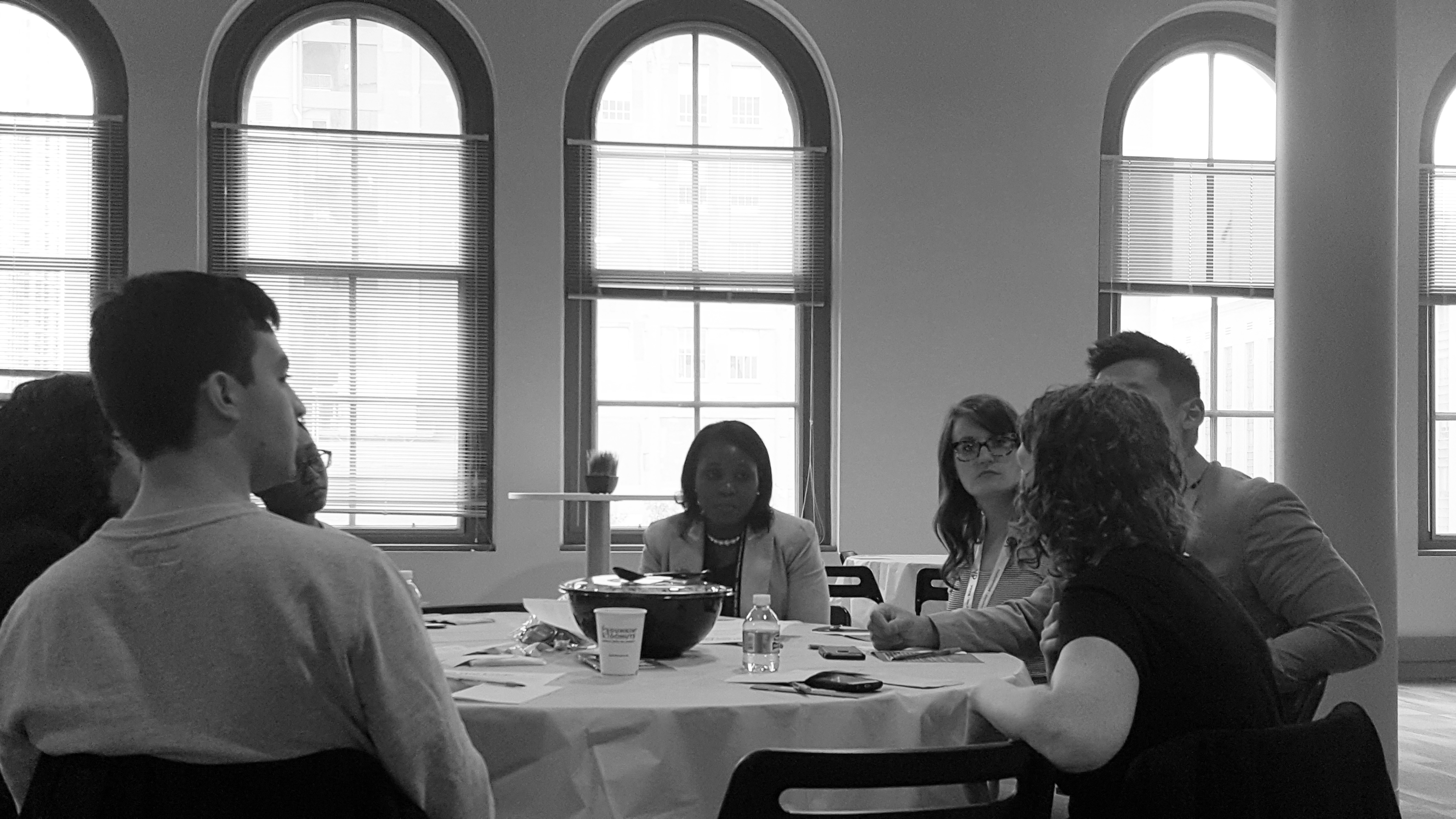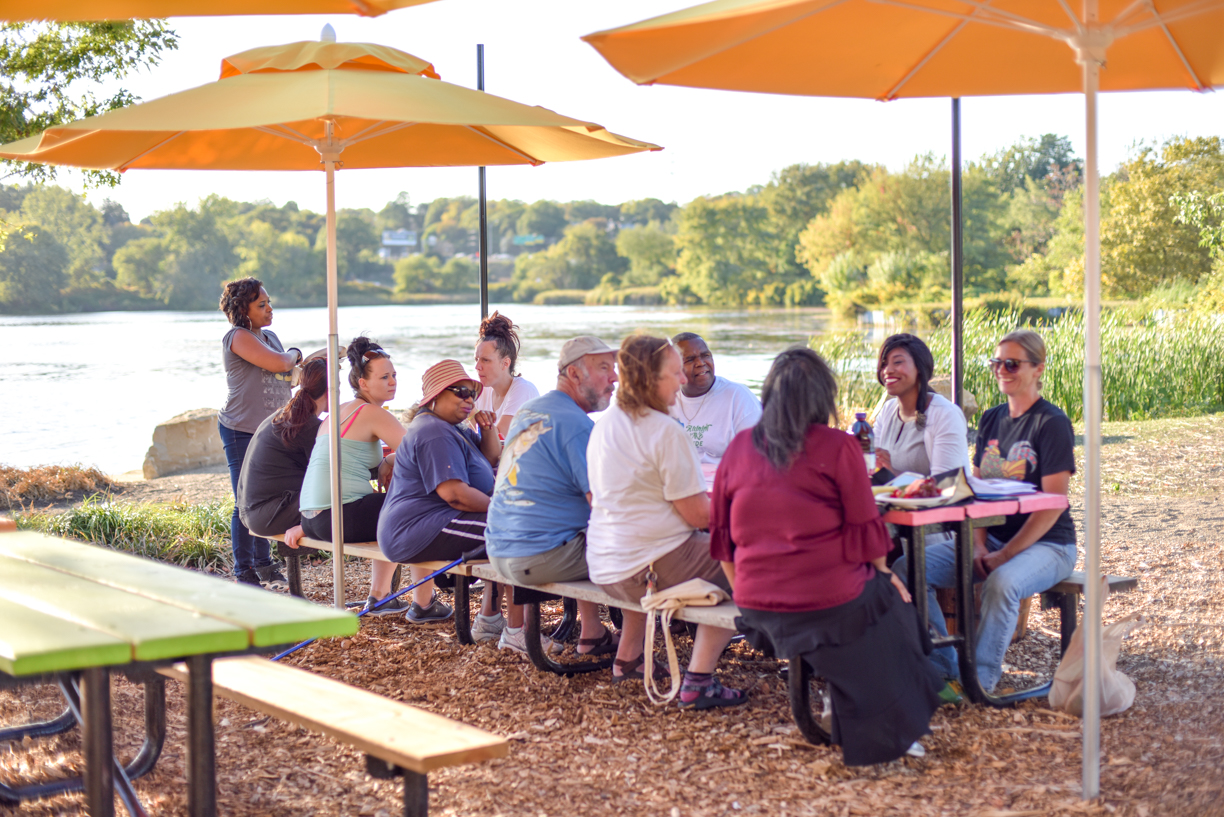To support a multi-part series to convene and educate nonprofit and public space leaders around strategies for engaging residents in neighborhoods using technology.
Program Area: Community Impact
To support CityLab 2018-an annual event produced by The Atlantic, the Aspen Institute and Bloomberg Philanthropies that convenes mayors and other city leaders from around the world to explore sustainable solutions to the most pressing issues cities face. In its sixth year, CityLab will take place in Detroit, MI from October 28-30.
To develop a user-centered digital tool to share available Federal Smart Cities funding information across a broad range of stakeholders, including communities, universities, local industry, and non-profits.
MIAMI—March 5, 2018—The Emerging City Champions fellowship is accepting applications for the 2018-19 cohort. Launched in 2015 with support from the John S. and James L. Knight Foundation, the program provides upcoming civic leaders with funding and support to launch one project that will enhance public space, urban mobility or civic engagement in their city. Knight Foundation today announced a $250,000 reinvestment in the program.
The Emerging City Champions fellowship is open to anyone who meets the following criteria:
- They must be between the ages of 19-35.
- The project must take place in or benefit one of the 26 communities where Knight invests.
- Projects must contribute to improving public space, urban mobility or civic engagement.
- Applications must include a multimedia submission that describes their project.
The deadline to apply is Monday, April 2, 2018 at 11:59 p.m. EST. Successful applicants will be awarded $5,000 for their project, and receive ongoing mentorship, networking and capacity building opportunities. Interested applicants are encouraged to participate in a Facebook Live event on Wednesday, March 14 at 12 p.m. EST, where representatives of 8 80 Cities will answer questions about the program.
Visit www.emergingcitychampions.org for more information and to apply.
“Emerging City Champions has been a great vehicle for finding and supporting new voices and civic innovators in Knight’s communities. The funding and the training opportunities have supported champions as they have tested and, in some cases, successfully scaled projects that make their cities more vibrant places to live and work. As the program enters its fourth year we’re excited to expand the network of champions, and to strengthen civic leadership in Knight communities,” said George Abbott, Knight Foundation director for community and national initiatives.
The Emerging City Champions fellowship is for young people on the cusp of making transformative impacts in their cities. Emerging City Champions is a launchpad for up-and-coming civic innovators. Successful applicants have established themselves as dynamic problem solvers, but may lack the resources, connections or network to achieve their potential. Some participants may be seeking to scale up the impact of an existing community project. Others may have an entirely new and untested idea that will transform their city’s parks or transportation network. We encourage bold ideas and new solutions to common urban challenges from diverse voices.
“Emerging City Champions is about elevating new and diverse voices with fresh perspectives on how to build more accessible, inclusive and connected cities,” said Amanda O’Rourke, executive director, 8 80 Cities. “Each year, we are awed and inspired by the impacts and change that the fellowship participants bring to their communities. We are excited to see what new ideas this year’s competition will bring.”
The 2018-19 Emerging City Champions will be the fourth program cohort. Past participants have made dramatic improvements and long-term changes to their cities. These participants have established community organizations, created interactive public art, and transformed underused civic assets into vibrant public spaces. While most projects are temporary, each fellowship participant has pushed boundaries, changed mindsets, and in some cases inspired long-term investment in the public realm.
The program begins with the Emerging City Champions Studio in Toronto, Canada. The Studio is an immersive learning experience where fellowship participants hone their skills as civic leaders. Over three and a half days, participants will visit public spaces and learn about community-led programs that enhance civic engagement. The Studio features presentations by established city leaders and program alumni, and hands-on workshops on project planning, community engagement and marketing.
Emerging City Champions is led by 8 80 Cities, a nonprofit organization committed to improving the quality of life for people in cities by bringing citizens together to enhance mobility and public space.
Support for 8 80 Cities forms one part of Knight Foundation’s efforts to help cities attract and keep talented people, expand economic opportunity and create a culture of engagement. The foundation believes that successful communities are equitable, inclusive and participatory.
The 26 Knight cities include eight communities that have a resident program director: Akron, Ohio; Charlotte, North Carolina; Detroit; Macon, Georgia; Miami; Philadelphia; St. Paul, Minnesota; and San Jose, California. In 18 cities community foundations guide Knight’s investments: Aberdeen, South Dakota; Biloxi, Mississippi; Boulder, Colorado; Bradenton, Florida; Columbia, South Carolina; Columbus, Georgia; Duluth, Minnesota; Fort Wayne, Indiana; Gary, Indiana; Grand Forks, North Dakota; Lexington, Kentucky; Long Beach, California; Milledgeville, Georgia; Myrtle Beach, South Carolina; Palm Beach County, Florida; State College, Pennsylvania; Tallahassee, Florida; and Wichita, Kansas.
For more information on 8 80 Cities visit: 880cities.org. To apply to the Emerging City Champions Fellowship, submit your application at emergingcitychampions.org by April 2, 2018.
About 8 80 Cities
8 80 Cities is a nonprofit organization based in Toronto, Canada. We are dedicated to contributing to the transformation of cities into places where people can walk, bike, access public transit and visit vibrant parks and public places. Our approach is to engage people and communities across multiple sectors to inspire the creation of cities that are easily accessible, safe and enjoyable for all. We achieve our mission through grant projects, advocacy work and our innovative services.
About the John S. and James L. Knight Foundation
Knight Foundation supports transformational ideas that promote quality journalism, advance media innovation, engage communities and foster the arts. We believe that democracy thrives when people and communities are informed and engaged. knightfoundation.org
CONTACTS:
Anusha Alikhan, Director of Communications, John S. and James L. Knight Foundation, 305-908-2646, [email protected]
Ryan O’Connor, Director of Programs, 8 80 Cities, 416-591-7404, [email protected]
“I am a prisoner of hope and I am a techno-optimist. But I have to admit, so far it’s been a tough new century for trust and authenticity.” – Knight Foundation President Alberto Ibargüen
Indeed. As far as trust in the media is concerned, the 21st century is off to a bumpy start.
As bots proliferate, attacks on a free press continue and the average person finds it difficult to separate fact from fiction, trust in American news sources is sinking to new lows. Just how the media can regain trust was at the heart of the conversation at the Knight Media Forum, a gathering of leaders in philanthropy, media and technology working to strengthen local news and communities. No one offered a quick fix. If they agreed on one thing, it’s that the rebuilding will take time. Meanwhile, a new Knight Commission on Trust, Media and Democracy is traveling the country to look at causes and offer solutions.
At the forum, Commission co-chair Tony Marx offered four early framing questions for the group’s work:
- How are we going to help people determine what is factual and what is not?
- What is the business model for local news?
- How can we figure out what to do about the dark money that fuels misinformation online?
- How can we encourage people to get out of their information silos?
You can read more about the commission’s latest thinking, and efforts on Medium.
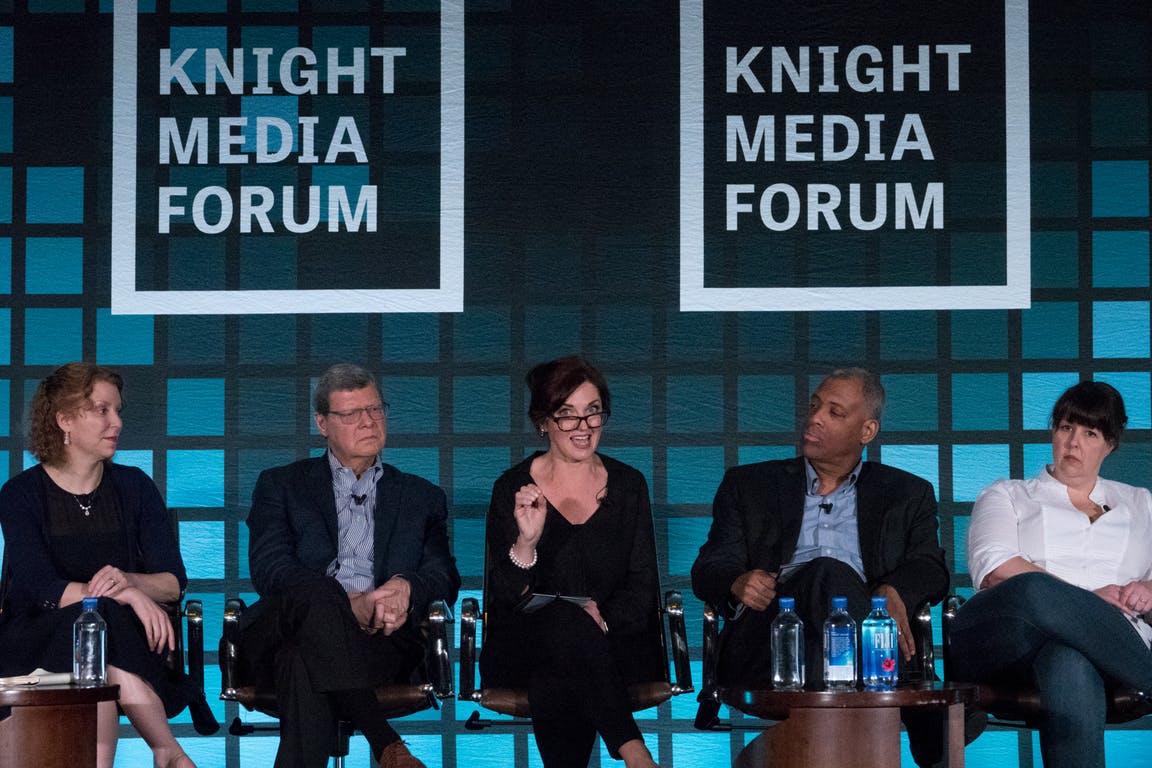
Here are some key takeaways from the two-day event, which was held Feb. 19-21, 2018 in Miami:
Fake news isn’t a market failure. It’s an intrinsic part of the system.
Algorithms increasingly hold sway over our lives, and what we see in our social feeds. But those algorithms are optimizing for profit, said Tim O’Reilly, CEO of O’Reilly Media. They favor the kinds of sensational news that gets clicks and is often shared. And fake news makes money.
Still he offered hope, and a call to action to funders in the room: to advocate for creating, or recreating algorithms to optimize factors beyond revenue.
“I am an optimist that these vast algorithmic systems we are learning to build can be a basis of very different markets, that are more equitable, and create a more inclusive society that looks after all of us in a way that the dog-eat-dog economy does not. We need to master the systems before they master us.”
O’Reilly also offered advice for local news organizations that want to build sustainable operations people trust. Local news sites need to stop chasing the clicks that fuel the online advertising industry and incentivize sensationalism. Instead, he suggested they focus on offering quality news, and find revenue through subscriptions or other models.
Media companies have to “create value for people who care about that value,” @timoreilly told #infoneeds – not just chase clicks.— Bill Nichols (@BillDNichols) February 20, 2018
Fake news is about to get more sophisticated.
Take a moment to look at this video:
The piece was created by University of Washington researchers, who used artificial intelligence to recreate President Barack Obama’s face and voice. It was an experiment. But imagine the potential as this technology gets into more people’s hands, said Amy Webb, founder of the Future Today Institute.
What if someone stuck words into a world leader’s mouth, and duped a journalist or the public?
What if someone placed the face of a journalist into a political rally, in a dangerous part of the world?
What if someone used your face to propagate fake news?
Fake news is not going away, Webb said. It’s going to become more sophisticated and harder to detect.
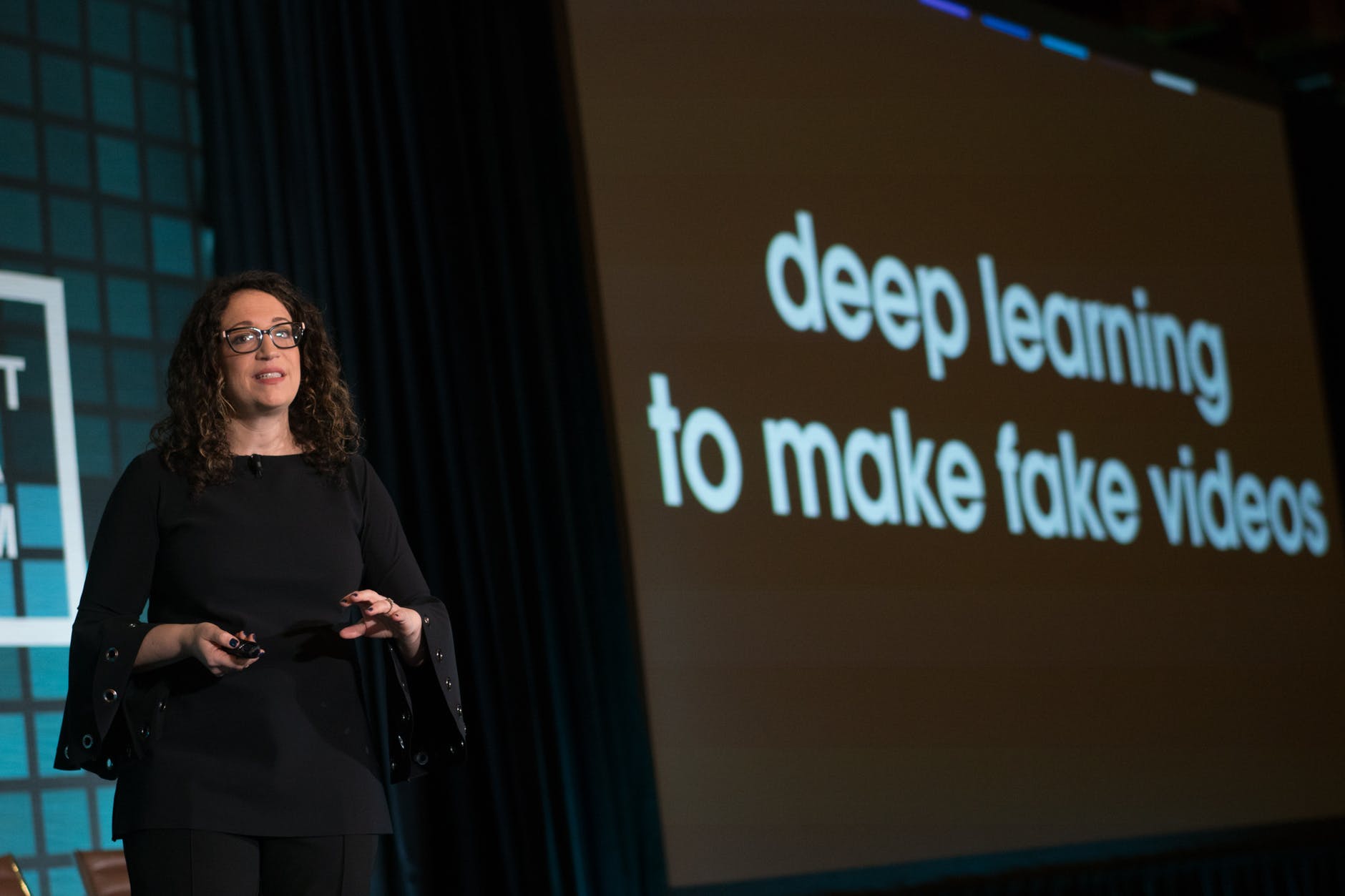
We’re living in tumultuous – but not unprecedented times.
The invention of the printing press fundamentally changed life in Europe – but it was followed by some 30 years of war, said Bob Schieffer, former CBS news anchor and host of “Face the Nation.” His point? As we enter this new chapter in human history, driven by technology, expect turbulence.
Case in point: Even though we all have access to multitudes of information at any given time, our newsrooms are shrinking. In fact, Schieffer said;
- The United States has lost 126 newspapers in 12 years.
- The number of journalists has shrunk to the point that one in five reporters lives in Washington, D.C., New York or Los Angeles.
- 21 of 50 states do not have a single Washington correspondent, and many news organizations can’t afford to cover the state house.
Without a strong independent press to serve as watchdogs, we are likely to witness significant increase in government corruption. @bobschieffer @knightfdn #infoneeds— Emmett Carson (@emmettcarson) February 20, 2018
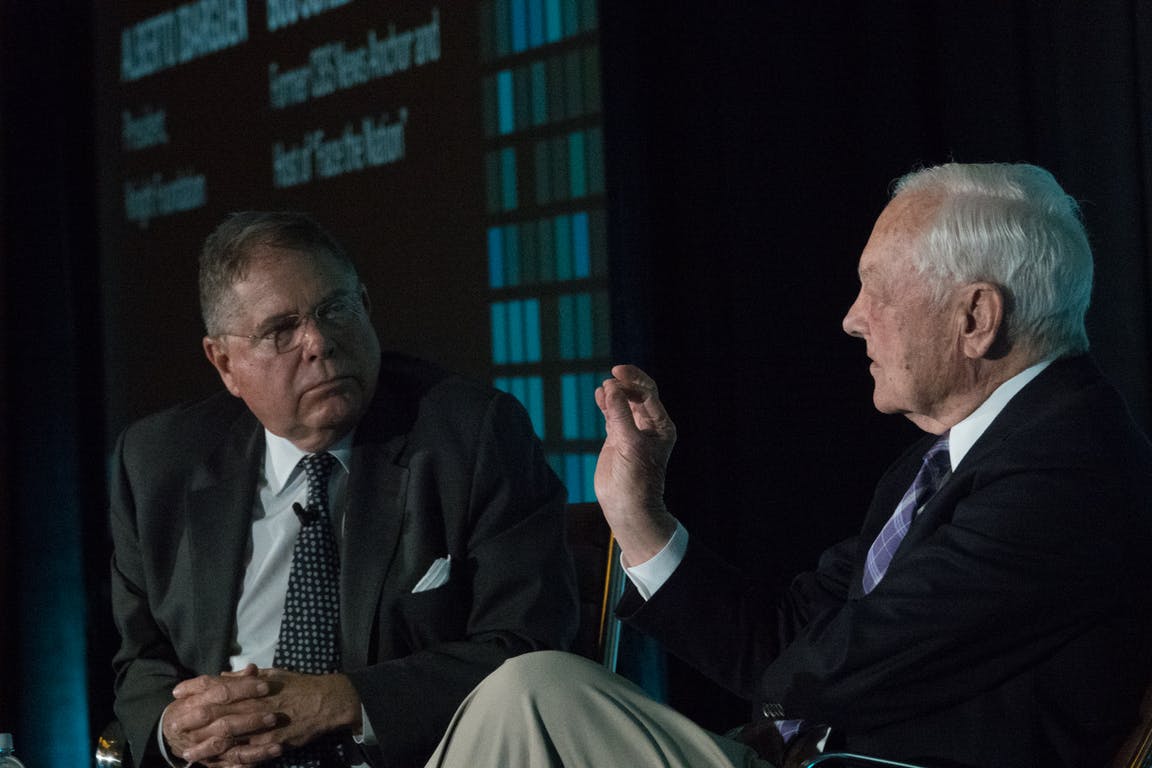
Yet Schieffer believes we will emerge stronger from this time of change. Technology always comes before we have a chance to understand it, he said. In the meantime, “it’s going to be a bumpy ride.”
Online civility is a problem, but may be overrated.
It was no surprise that on a panel titled “Civility, Technology and Community,” the discussion would center on why online discussions often devolve into arguments and insults, and how the Internet might be fixed.
Yet, scholar Frank Fukuyama,of Stanford University’s Center for Democracy offered a different perspective. Yes, social capital, trust and civility have been in decline since the 1950s. But those were the days when “white men formed the elite in every city,” he said. Since then, our communities have become more diverse, and offer more economic opportunity to a wider swath of people. It would be surprising if people were as tightly bound or had the same norms and values, he said.
“[Civility] is necessary for deliberative discourse in a democratic political system, but it can be overrated in a society when what it masks is the hegemony of one particular group whose rules have to be accepted by all the other players,” Fukuyama said.
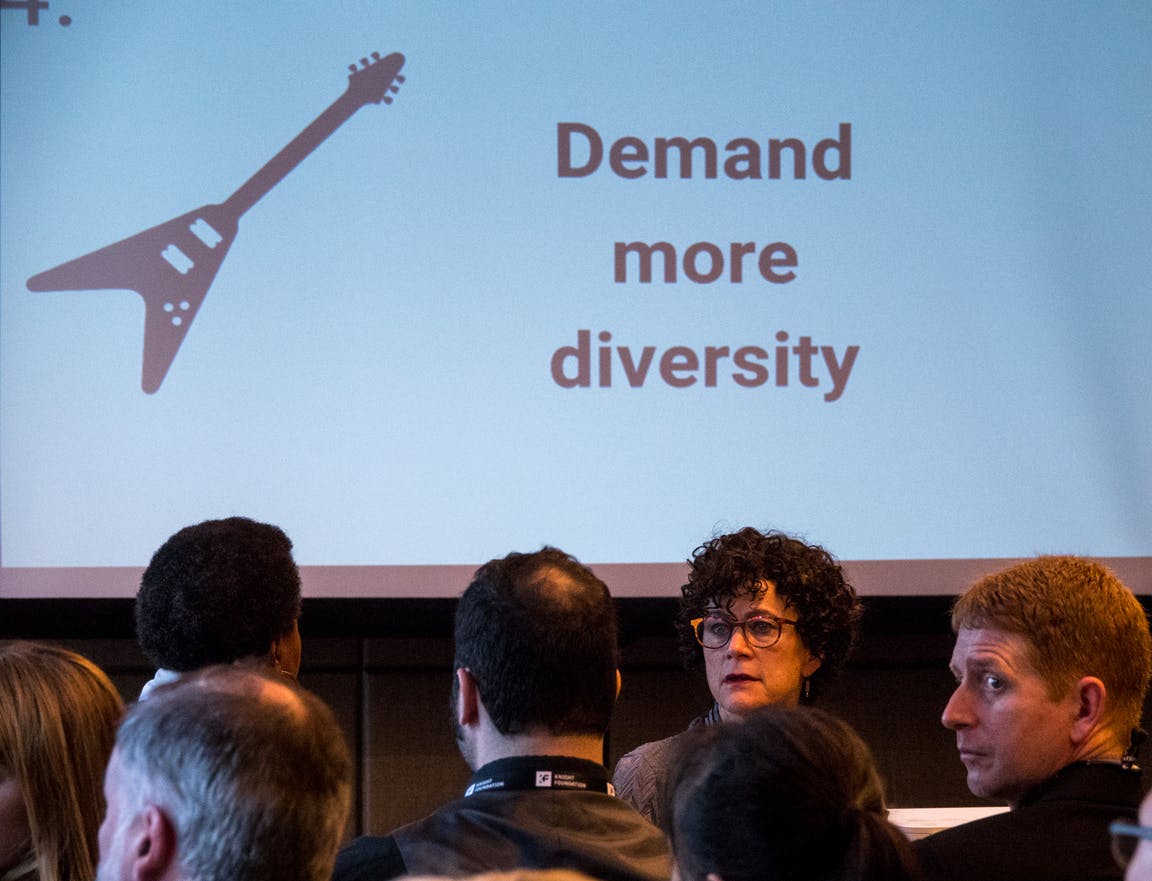
Funders and online news start-ups are seeing some successes.
A decade ago, as news outlets began to shrink, local funders and journalists started to come together to seek solutions for informing communities. Many of them received matching funding from Knight Foundation, through its Knight Community Information Challenge, which spurred funders to think of news and information as an integral part of community life.
One such example is VTDigger, an investigative news site in Vermont, launched originally with a $6,000 grant from the local community foundation. Over time, and with the help of foundation staff, 24 funds at the community foundation have supplied $1.3 million to the news site, helping it grow to a staff of 20 with a $1.5 million budget. Over time, VTDigger switched from relying on grants to cultivating underwriting and memberships.
“It has been about ultimately the journalism, and the fact that we are reporting on things the people care about,” said founding editor Anne Galloway.
Local funders have experimented with a variety of models. The Wyncote Foundation, for example, supported a news site on public planning in Philadelphia, run by the local public radio station, and the LOR Foundation partnered with local news organizations in the Intermountain West on solutions-focused journalism projects. You can read more about those and other models in a new publication from the Wyncote Foundation.
And still the experiments continue. Wikipedia Founder Jimmy Wales recently launched WikiTribune, a pilot project combining professional journalists with community contributors for local news stories.
“The truth is the resources aren’t there [for local journalism.] We have to find new ways to lower the cost of journalism by engaging communities,” Wales said. “If we can find a way to fully engage and benefit from thoughtful and kind people in a local community … then I think we are on to something.”
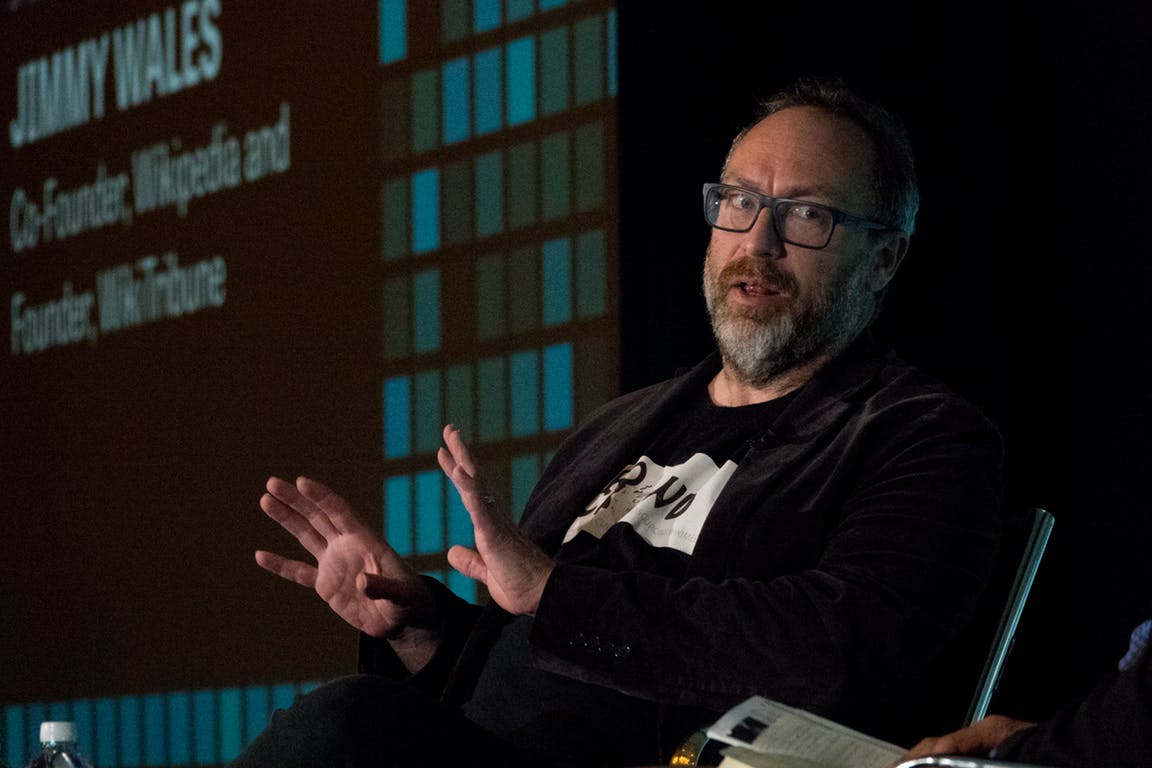
Daily receptions provided KMF attendees with the chance to network and share information and resources with colleagues between formal conference sessions. Photos: Angel Valentin
View all the Knight Media Forum’s keynote addresses on Vimeo
- Click here for Knight Media Forum videosExternal Content / Website
Mae Israel is an independent journalist based in Charlotte. Below, she writes about the impact of the On the Table initiative. Today, Knight Foundation is announcing a $2 million reinvestment in On the Table to connect neighbors over mealtime conversations in cities.
Huddled around tables in restaurants, churches, offices, museums and libraries across Charlotte on a sunny day in October, thousands of people were talking, in many cases to people they didn’t know, about the city issues that matter most to them.
The goal was to move beyond the niceties of casual chats toward in-depth and sometimes probing dialogue between people of diverse backgrounds and perspectives who might not otherwise have the opportunity to say hello.
Over meals from breakfast to dinner, Charlotte’s On the Table conversations came nearly a year after protestors rioted on uptown streets following a police shooting of an African American man, and after a report ranked the city last among the country’s 50 largest cities for economic mobility of its poor. The fast-growing Charlotte area also is tackling other urban issues: rising rents, a dwindling supply of affordable housing and traffic congestion.
During a breakfast gathering, as more than 100 people sat in a church at the edge of uptown, two African American men – an award-winning teacher, James Ford, and a former Charlotte mayor, Harvey Gantt – spoke candidly.
“We need to focus on equity,” Ford advised the racially diverse crowd in a discussion of equality. “Fairness is not sameness. It may require more resources and more energy.”
More issues, including education, the judicial system, poverty, community development and homelessness bubbled up in animated conversations involving more than an estimated 5,000 people during Charlotte’s On the Table. Charlotte was one of 10 communities that took part in 2017 as part of the Knight Foundation’s national effort to promote civic innovation and stronger communities.
Inspired by the On the Table program initiated four years ago by The Chicago Community Trust to promote civic engagement, the Knight Foundation this year invested $1.15 million to expand the idea across the country.
With community foundations as the primary partners, On the Table spread to Akron, Ohio; Charlotte; Columbus, Georgia; Gary, Indiana; Lexington, Kentucky; Long Beach, California; Miami; Philadelphia; Detroit; and Silicon Valley, California.
“This initiative is civic engagement at its best and goes to the heart of our work,” said Lilly Weinberg, the Knight Foundation’s program director for community foundations. “It gets people to come together to talk about community issues over food. There is value in providing a forum for civil discourse, particularly given the trend of increasing polarization in our country right now.”
Each of the cities adapted the community conversation to the personality of their area:
- Akron’s invitation to residents to come out and talk in September engaged an estimated 6,000 people, many eager to discuss the impact of the opioid epidemic and economic development.
- In Long Beach, an estimated 2,500 to 3,000 gathered, also in September, around tables set in such diverse settings as an aquarium, a craft-beer happy hour and a gondola cruise.
- Nearly 2,000 Philadelphia residents turned out in May to share opinions about education and youth development, equity and social inclusion, public safety and the judicial system.
- Miami had more than 3,000 participants – despite taking place shortly after Hurricane Irma blew through South Florida. The Miami Foundation had one of the more successful strategies for partnerships – working with public schools while leveraging almost all of the branch libraries for events.
- In Lexington, an estimate 11,700 people showed up, launching the first of this year’s On the Table gatherings in March, convened by the Blue Grass Community Foundation. The city imbedded their planners in conversations and used the data to inform their 2025 Comprehensive plan.
In response to the momentum generated by On the Table, the Blue Grass Community Foundation has awarded $50,000 in “What’s Next” grants to 30 individuals and groups to support ideas that surfaced during the event. Lexington planning officials also took the opportunity during On the Table to solicit community comment on the update of Lexington’s comprehensive land-use plan.
In Charlotte, the Community Building Initiative, a nonprofit organization which works on racial and diversity issues, partnered with the Foundation For The Carolinas to help organize On the Table. The organization, which sponsored earlier efforts to engage residents around specific issues, reached out to individuals and groups across the Charlotte area, crossing zip codes with varying incomes. Its leaders say they would have liked to have connected with an even more diverse group of people.
The more than 200 On the Table conversations took place at retirement centers, high schools, universities, the county jail, the county courthouse, an outdoor area uptown where homeless people gather, a country club and at local businesses. Some people came because they were encouraged by their organizations. Others saw media notices and wanted to get involved.
“It was a worthy effort,” said Dianne English, the Community Building Initiative’s executive director. “It reinforced the idea of social capital and how important it is for people to have social connections.”
At Queens University, where students served as moderators for more than 50 people, the issues discussed at one table were wide ranging: the need for more affordable housing, more tutors in schools and more job training. The six participants wondered why so many poor people in Charlotte remain trapped because of problems with economic mobility.
Across town, in a church hall in a predominantly African American church, members from two United Methodist congregations joined during the evening to talk; earlier in the day some had gathered at the predominantly white church. The churches – St. Mark’s United Methodist, mostly African American, and Myers Park United Methodist, mostly white – began collaborating about 18 months ago on programs to break down racial barriers.
At St. Mark’s, a group of about 60 picked up pizza slices and salad before heading to tables seating six to 10 people. One group’s conversation focused on the challenges of connecting with people of different races and incomes when many people segregate themselves based on those circumstances.
“I’m disappointed by how upper class white people isolate themselves in Charlotte,” said Lisa Howell, a member of Myers Park, located in one of Charlotte’s most affluent center city neighborhoods. “When are we going to change? You have to be intentional, willing to be uncomfortable.”
Camille Davidson, a St. Mark’s member, agreed. “I thought that the New South meant people would be more aware of each other,” she said. “I have been disappointed. I sometimes feel like the New South is the Old South with cellophane.”
“Still,” she added, “I think today is a great start.”
Early survey results from participants, analyzed by the University of Illinois at Chicago’s Institute for Policy and Civic Engagement, which evaluated surveys from all 10 cities, indicate this is an event that bridges divides and inspires action. For example, in Philadelphia, 74 percent talked with someone they did not know and 41 percent exchanged contact information with someone they had not previously met. When asked if they made specific plans to work with another participant, 26 percent of those who responded to the survey said they did.
The results also show where community members are most interested in creating change in their communities. In Long Beach, it’s around homelessness while in Silicon Valley it’s focused around the housing crisis.
Knowledge is power and with this information, decision makers, funders and community members can be better equipped. Both anecdotal evidence and the survey data show the power of what an open invitation and food can do – bring people together to positively change their community.
-
Community Impact / Article
-
Community Impact / Article
-
Community Impact / Press Release
Today, Knight Foundation is announcing a $2 million reinvestment in the On the Table initiative to connect neighbors over mealtime conversations in cities.
As a national foundation with deep local roots in 26 Knight cities, we believe informed and engaged communities are the building blocks to a successful democracy. We have seen across our cities the power of breaking bread – allowing a platform for solutions-oriented conversations while capturing data from those conversations to inform decision makers and the community at large. On the Table invites residents to dine together, discuss community issues and solve problems. It’s an initiative that truly gets to the heart of informed and engaged communities.
This initiative would not have been possible without community foundations, which were the key leader and partner in pulling off the events across the country. And that makes sense – they know their community. They managed the day to day and were the key partners in the cities. We have learned a lot from their experience. Below are three learnings from community foundations on pulling off a successful On the Table:
- Plan ahead for the data: This is easier said than done, but it’s powerful to have thousands of your community members providing feedback on your community. This is rare, so take advantage of it. However, data is limited to the way in which it’s used, so come up with a plan beforehand. Some community foundations planned to leverage the findings for their own strategic grant-making. For example, Long Beach is structuring funds and a focus around the most important issues they heard from their community, with homelessness and housing rising to the top. In Lexington, Blue Grass Community Foundation planned ahead of time to imbed the City of Lexington planning department in the conversations. Consequently, the city used the information for their 2025 plan and for other important decision-making around development issues (1/3 of participants said a top priority was to protect the bluegrass landscape). None of this would have happened without the foundation partnering with the city on harnessing the data.
- Outsource capacity support: It’s hard to pull off this initiative without capacity support. Let’s be real – On the Table is a lot of work, especially for a small organization. So many community foundations hired a local organization for support. And dependent on needs, some hired a grassroots organizer while others hired a local PR/media firm. This was critical for supporting the outreach of the initiative, increasing numbers and diversity while ensuring a successful, inclusive event. We also saw that within each community, social media went through the roof. Literally, millions of impressions were made and for some of our small community foundations, this is hard to sustain. So plan accordingly to give some extra support to your communications team (or person) and this will not only support the day of the initiative but will also sustain the followers in the future for your organization.
- A Branding Opportunity: We learned from the surveys that in many communities nearly half of On the Table participants had never even heard of their local community foundation. Wow, let that sink in for a second – what an amazing branding opportunity for the community foundation! To be clear, that’s not the purpose of the initiative, but it is an opportunity that allows for the community foundation to be front and center. For example, Legacy Foundation in Gary, Indiana, gave out little notebooks with their name to each participant. They also prepped each host with a one line sentence to read about the foundation. What do you want that one line to be – well that’s important for you to figure out beforehand. It allows for participants to hear about the community foundation and understand that it’s a resource in the community.
Overall, On the Table served as an amazing opportunity for community foundations to be front and center, engaging with their community. Seize that opportunity and plan accordingly!
-
Community Impact / Press Release
-
Community Impact / Article
Sandra Shea is the managing editor, Opinion, for the Philadelphia Media Network. Below, she writes about the Philadelphia Media Network’s experience with On the Table in 2017. Today, Knight Foundation is announcing a $2 million re-investment in the On the Table initiative to connect neighbors over mealtime conversations in cities.
We live in a new era of change and instability. We have grown used to disturbing terms like “alternative facts” and “fake news;” been exposed to policies and rhetoric that create division and fear, and have had to scrutinize our identity as a nation and a democracy. Amid this uncertainty, there are a few things I am sure of: we can always find truth in people’s stories. We can always find strength in conversations with each other. We can always solve our problems if we are at the table, together.
That’s why we at Philadelphia Media Network were excited to participate in “On the Table” and why it felt like it came at just the right time. The timing was also good because not long before, we began examining ways we could develop deeper relationships with our audience, and listen to them more deeply.
We invited five different groups – for breakfast, lunch and dinner – and invited editors and reporters to participate and help moderate the conversations. We had done initial screening and selected topics based on participants’ interests, but tried to let the people shape the conversations.
Our editors and reporters found the conversations at each table illuminating. Many reporters followed up with some participants as sources for stories, and editors were inspired to think about these kinds of gatherings as a way to connect with our audience. What was most meaningful was watching how each group, made up of diverse individuals representing a broad spectrum of opinions and outlooks, found ways to listen to each other, and to connect.
I can’t help thinking that this program is the beginning of a new chapter in our democracy – one that shaped by the act of listening, and written by the people in every neighborhood across the city and beyond.
-
Community Impact / Press Release
-
Community Impact / Article
-
Community Impact / Article
MIAMI – Feb. 26, 2018 – On the Table, a national initiative which in 2017 brought 40,000 residents in 10 cities together in mealtime conversations to talk about ways to address pressing community issues, will return to communities across the country with $2 million in new funding from the John S. and James L. Knight Foundation. The support will renew the initiative for another two years, through 2019.
On the Table replicates an annual civic engagement initiative of the same name developed by The Chicago Community Trust in 2013. The initiative was expanded by Knight Foundation in 2017, with community foundations in cities across the country leading the effort.
“On the Table is a surging effort to reinvent public dialogue. In its first year, the national effort brought together thousands of people to meet and discuss difficult and sometimes contentious issues face-to-face. Participants worked to build connections and consensus, identify solutions to local challenges, and use these results to influence decision-makers. In its next phase, we hope to see these conversations translate to deeper local action,” said Lilly Weinberg, Knight Foundation director for community foundations.
In 2018, On the Table initiative will involve community foundations in 10 cities where Knight invests: Akron Community Foundation (Akron, Ohio); Foundation for the Carolinas (Charlotte, North Carolina); Community Foundation of the Chattahoochee Valley (Columbus, Georgia); Legacy Foundation (Gary, Indiana); Blue Grass Community Foundation (Lexington, Kentucky); Community Foundation of Central Georgia (Macon); The Miami Foundation (Miami); Community Foundation for Palm Beach and Martin Counties (Palm Beach, Florida); Philadelphia Foundation (Philadelphia); and Silicon Valley Community Foundation (San Jose, California).
Each city will schedule one day when they will convene thousands of residents to share both a meal and ideas on how to make their city a better place to live and work, while identifying opportunities to address local challenges such as affordable housing, climate change, race relations, and urban design and public space improvements. Data and insights from On the Table help to inform many strategic plans and grant-making for both community foundations and city governments. Data is also shared with local decision-makers, organizations and residents to encourage them to collaborate on actions that can improve the quality of life in their city.
In its first year, On the Table participants created a national network of people who are working to make communities stronger and more successful. The conversations sparked new community collaboration across sectors, informed city planning efforts, and facilitated participants moving ideas to action through projects in their community.
Blue Grass Community Foundation will kick off the 2018 effort in Lexington, Kentucky on March 28. Follow Knight Foundation and #knightcities on Twitter for updates about On the Table conversations in other cities throughout the year. Other dates include:
- Akron, Ohio: Oct. 3, 2018
- Charlotte, North Carolina: Oct. 24, 2018
- Columbus, Georgia: Oct. 23, 2018
- Gary, Indiana: Sept. 26, 2018
- Macon, Georgia: Oct. 17, 2018
- Miami, Florida: Oct. 23, 2018
- Palm Beach County, Florida: Oct. 24, 2018
- Philadelphia: Nov. 8, 2018
- Silicon Valley: Oct. 23, 2018
Support for On the Table forms one part of Knight Foundation’s efforts to help cities attract and keep talented people, expand economic opportunity and create a culture of engagement. The foundation believes that successful communities are equitable, inclusive and participatory.
About the John S. and James L. Knight Foundation
Knight Foundation is a national foundation with strong local roots. We invest in journalism, in the arts, and in the success of cities where brothers John S. and James L. Knight once published newspapers. Our goal is to foster informed and engaged communities, which we believe are essential for a healthy democracy. For more, visit http://knightfoundation.org.
CONTACT:
Anusha Alikhan, Director of Communications, John S. and James L. Knight Foundation, 305-908-2646, [email protected]
-
Community Impact / Article
-
Community Impact / Article
-
Community Impact / Article
DETROIT – Feb. 22, 2018 – To ensure Detroit’s residents have the information and access they need to influence civic decision-making, the John S. and James L. Knight Foundation today announced $1.5 million in new funding to CitizenDetroit. This funding will enable the organization, an independent nonprofit, to scale its efforts, promoting regular online and in-person dialogues about important civic issues, and producing research to help residents better understand local government and their role in shaping it.
Citizen Detroit started as a project incubated at Wayne State University. Over the past five years, it has engaged roughly 2,000 Detroiters on multiple topics crucial to civic life. The nonpartisan organization educates residents on candidates and policy issues, and encourages them to think critically about elected officials and emerging political topics.
“CitizenDetroit has worked to create important community impact, including the long-term development of residents’ knowledge and skills to critically assess policy decisions and political campaigns,” said Sheila Cockrel, CitizenDetroit’s co-founder and executive director. “With this new support we hope to provide even more residents with quality, actionable information, giving them the tools they need to make informed voting choices and hold elected officials accountable.”
Knight Foundation funding will help propel two of the organization’s program areas: PolicyLab and Civic Exchange. PolicyLab is the research arm of CitizenDetroit; it works to produce information that helps residents make informed decisions and educate them about local issues. Civic Exchange delivers community education experiences to residents, including town halls with candidates and elected officials, dinner and dialogues about local issues, and interactive exercises designed to promote learning and participation. In addition, the organization will use Knight support to build an online platform that will highlight civic information, activities and programs, as a way to reach many more residents.
“When quality information, debate and participation feel accessible and urgent, and when residents feel that their voices matter in civic discourse and in their dialogue with elected officials, community engagement flourishes. CitizenDetroit is working to provide a safe, nonpartisan, welcoming venue to move this goal forward. Expanding their work has the potential to build a more inclusive, successful Detroit,” said Katy Locker, Knight Foundation program director for Detroit.
On Jan. 27, 2018, CitizenDetroit held its first Citizen Assembly with more than 300 participants, including City Hall leaders. At the Assembly, residents developed an action agenda to hold elected and appointed leadership accountable for supporting equity and opportunity for all Detroiters. The agenda will drive CitizenDetroit’s interactions with residents and public officials over the coming year.
In a December 2017 CitizenDetroit participant survey, 91 percent of respondents said that CitizenDetroit was “extremely effective” or “very effective” in helping them critically assess candidates and political platforms. The figure was 86 percent for understanding the roles and responsibilities of local elected offices, 84 percent for developing informed opinions about complex policy issues, and 80 percent for being equipped to engage more deeply in civic life.
“Democracies thrive when citizens can make informed decisions,” said Cockrel. “Residents’ priorities should drive the public agenda. CitizenDetroit is entering into an exciting phase of its existence where we can continue to educate, engage and mobilize citizens in the nonpartisan public policy decision-making of city life.”
Support for CitizenDetroit is part of Knight Foundation’s efforts in Detroit to promote democratic engagement and community information. Since 2008 Knight has pledged more than $100 million to Detroit.
###
About the John S. and James L. Knight Foundation
Knight Foundation is a national foundation with strong local roots. We invest in journalism, in the arts, and in the success of cities where brothers John S. and James L. Knight once published newspapers. Our goal is to foster informed and engaged communities, which we believe are essential for a healthy democracy. For more, visit knightfoundation.org.
About Citizen Detroit
Between 2018 and 2021, CitizenDetroit will expand and enhance its programming to reach every city council district and to connect with other organizations and efforts shaping the landscape of citizen participation. The organization will serve as an influential and effective platform for organizing and activating engaged citizens in the democratic process so that Detroit becomes the most civically active city in the country by 2021. For more, visit citizendetroit.org.
Contacts:
Sheila Cockrel, Executive Director, CitizenDetroit, 313-319-9600, [email protected]
Anusha Alikhan, Director of Communications, John S. and James L. Knight Foundation, 305-908-2646, [email protected]
Sheila Cockrel is co-founder and executive director for CitizenDetroit, an independent nonprofit that organizes and activates engaged citizens in the democratic process. Citizen Detroit is receiving $1.5 million in new support from Knight Foundation.
On Saturday, Jan. 27, 2018, several hundred Detroiters of all ages, races and life experiences convened in a union hall near downtown Detroit for CitizenDetroit’s first Citizen Assembly. The Assembly’s mission: to understand how Detroit’s history has shaped its present, and together, agree on the priorities we’ll use to hold our elected officials accountable. After four hours of speakers, thought-provoking exercises and deliberation, 10 priorities were identified. These will be used as progress indicators to assess the actions of elected officials – those in office and those running for office – over the next three years. The priorities include:
- All Detroiters will have access to quality education.
- We won’t support a development if Detroiters are moved so others can move into their homes.
- Our transit system will transport Detroiters to their jobs and appointments.
- All neighborhoods will be safe.
- We’ll fight economic segregation: every area of Detroit will have a place for people of all incomes.
- Those who stayed will have an active voice in shaping their neighborhood redevelopment.
- Government actions will be transparent and accountable to residents.
- The City will promote and protect residents’ health, well-being and safety.
- Jobs and opportunities will be brought close to the neighborhoods whenever possible – and made available first to Detroiters.
- Blight removal is critical but we must save every house we can.
Building on this work, CitizenDetroit will produce a scoreboard that tracks how the city is doing across a multitude of measures. At the assembly, many attendees also signed up to be part of a group that will help track progress through CitizenDetroit’s action arm, EngageD. With the support of a three-year grant from Knight Foundation, we will engage in deep civic education that equips Detroit residents to be the most informed and engaged citizens in our country.
CitizenDetroit’s participants include those who have long histories of championing for breakthroughs in civil rights, as well as young adults who are coming of voting age and want to participate more fully in the democratic process. While there is a sense of great hope among them for the future of Detroit, there is also a fear that their voices won’t be heard. CitizenDetroit is committed to creating a space for Detroiters from all walks of life to come together to break bread and discuss the most important issues facing our city.
Detroit is facing a period of great transition since exiting bankruptcy and emergency financial management. A recent Knight Foundation-commissioned report for Detroit Future City, 139 Square Miles, noted: “For the first time in 60 years, the city is moving toward population growth, [and yet] today, 53 percent of Detroit residents live in ‘areas of concentrated poverty.’”
Enhancing the decision-making skills of local residents about their rights as citizens has been and remains necessary to set the agenda for change in the city. When laying out city planning goals at the 2017 Mackinac Policy Conference, Detroit Mayor Mike Duggan said: “Our principle is this: one city for all of us.” This mandate has set in motion a call for increased attention and dialogue among residents about how decisions are made in the city and who decides. CitizenDetroit serves as a platform for Detroiters to become informed about issues that are important to them and what’s at stake.
President Obama, paraphrasing Louis Brandeis in his farewell address, stated that the most important office in our democracy is that of “citizen.” We believe citizens can and will change the course of policy and the course of the country for the better. We’re bringing the notion of citizen power forward in 2018. We will work with our fellow Detroiters to promote a multilayered and critical understanding of policy issues and candidate platforms. In this way, citizens can make decisions rooted in shared values as our city undergoes an incredible period of transformation.
